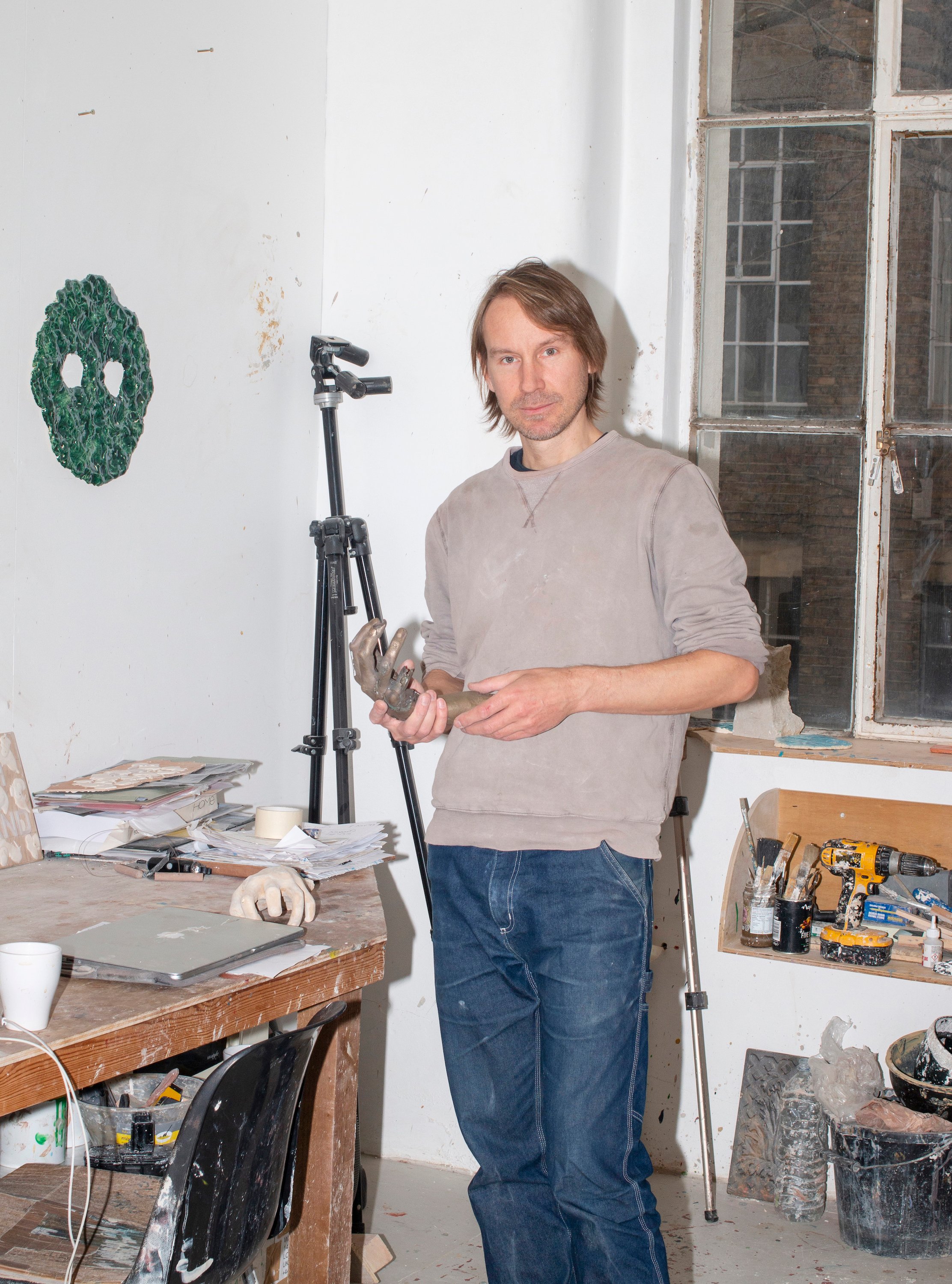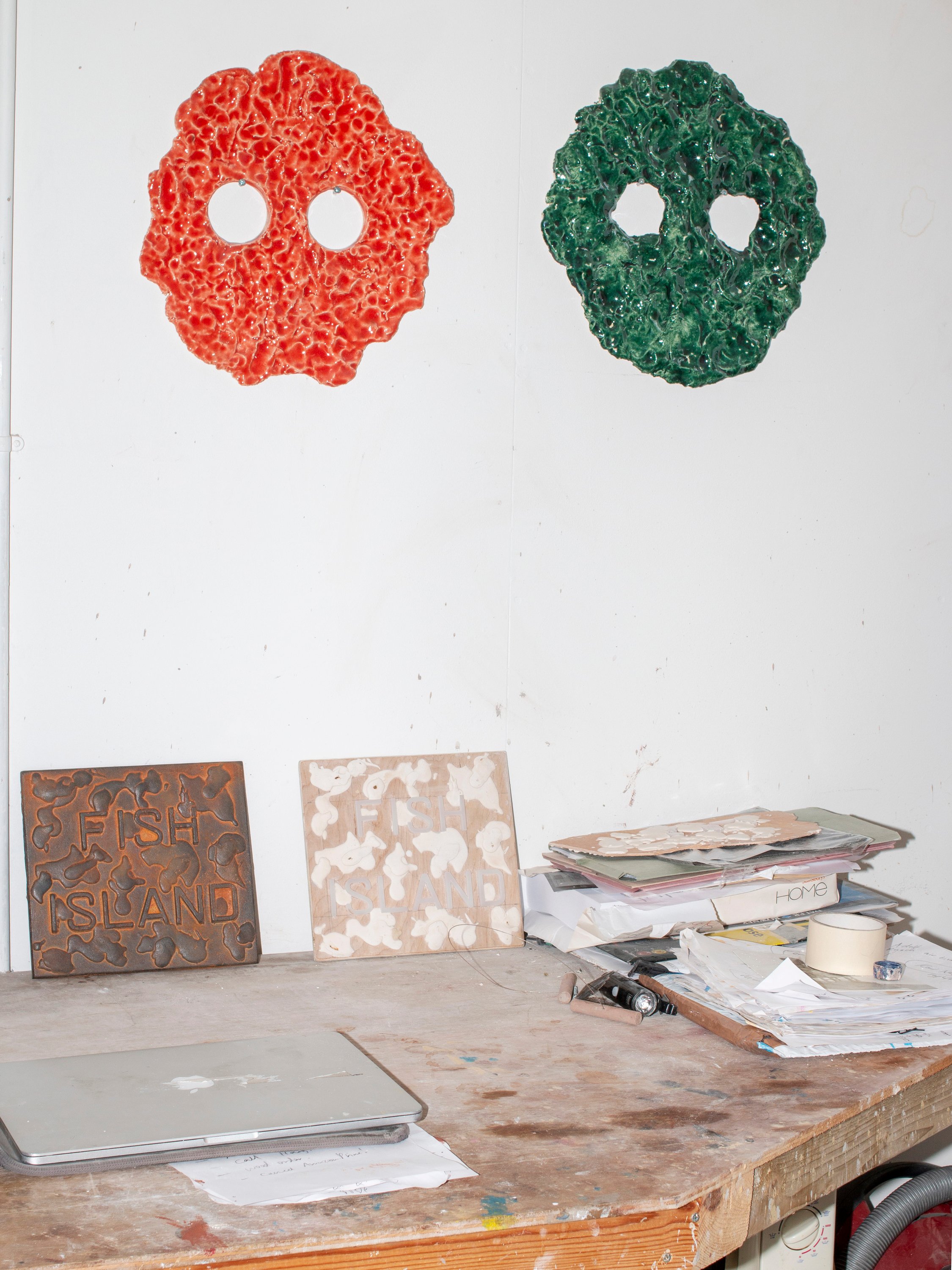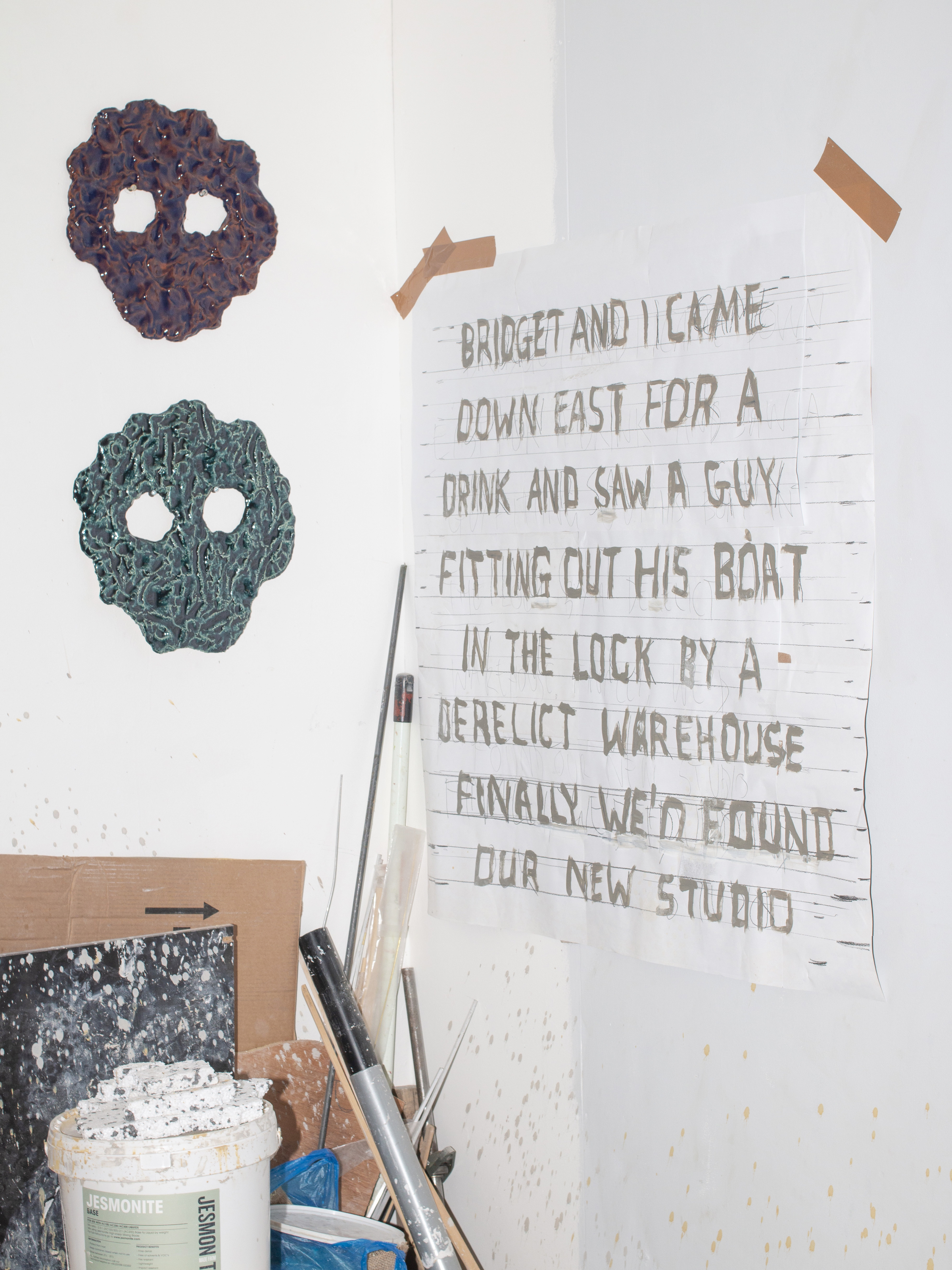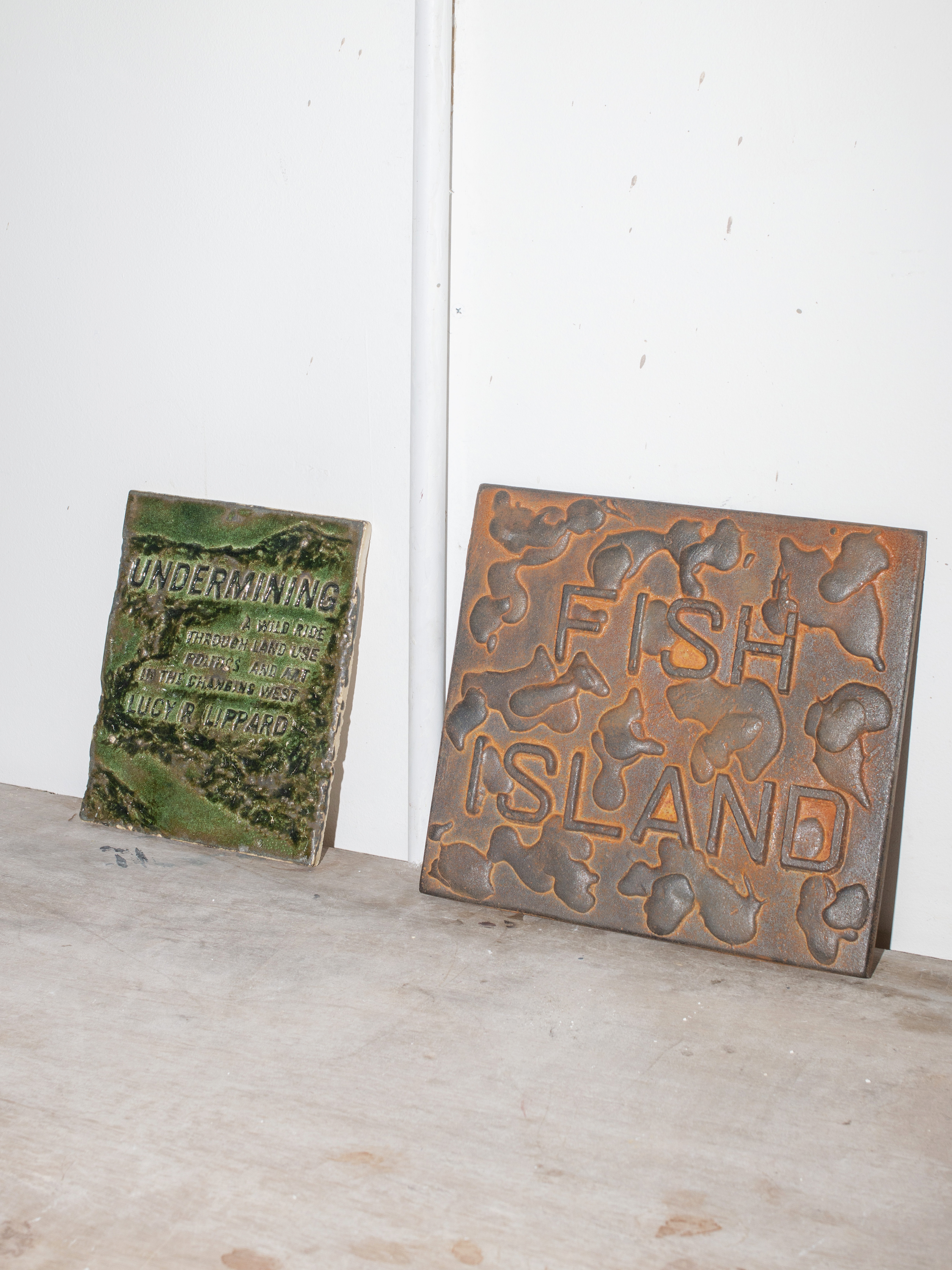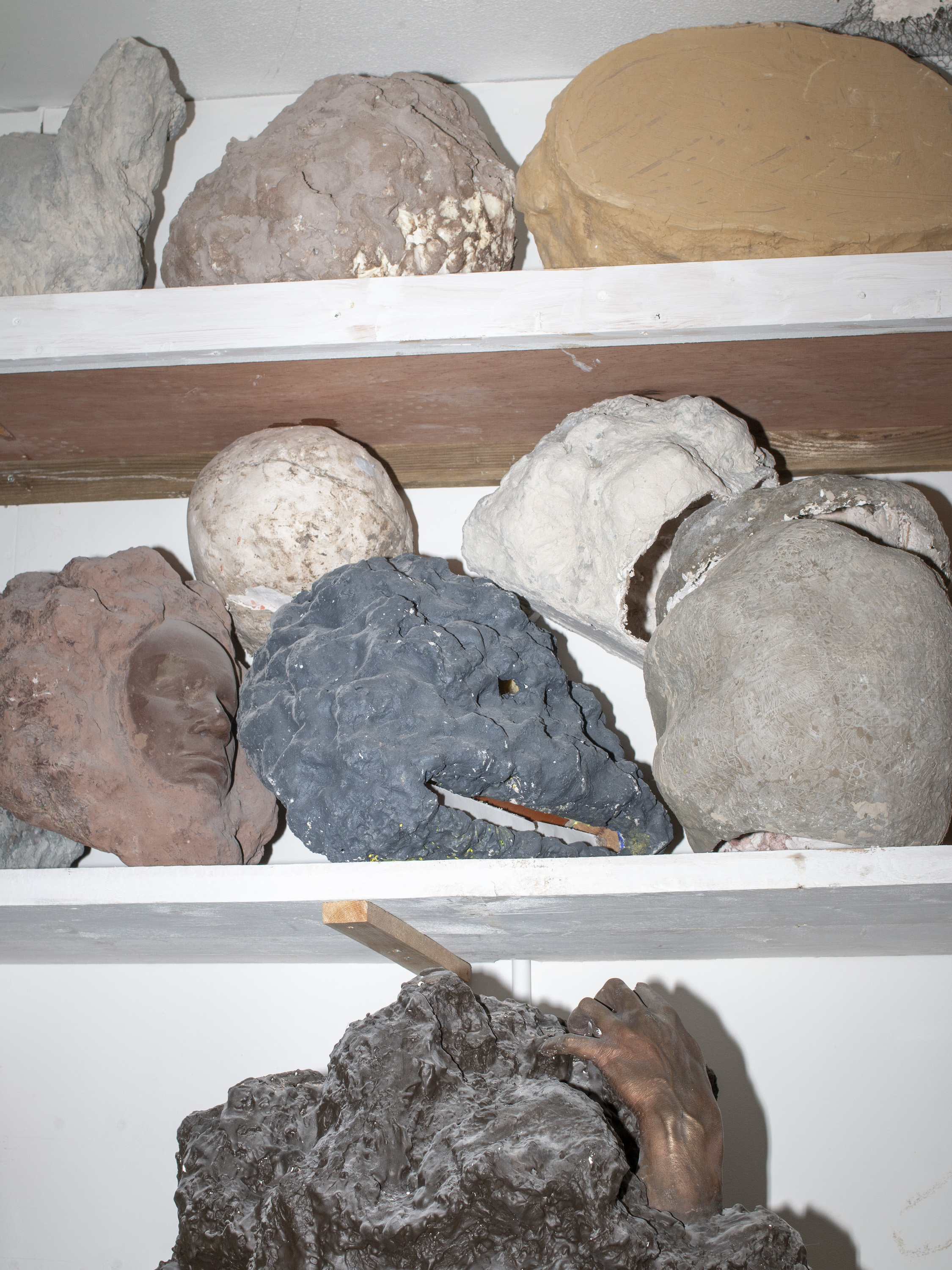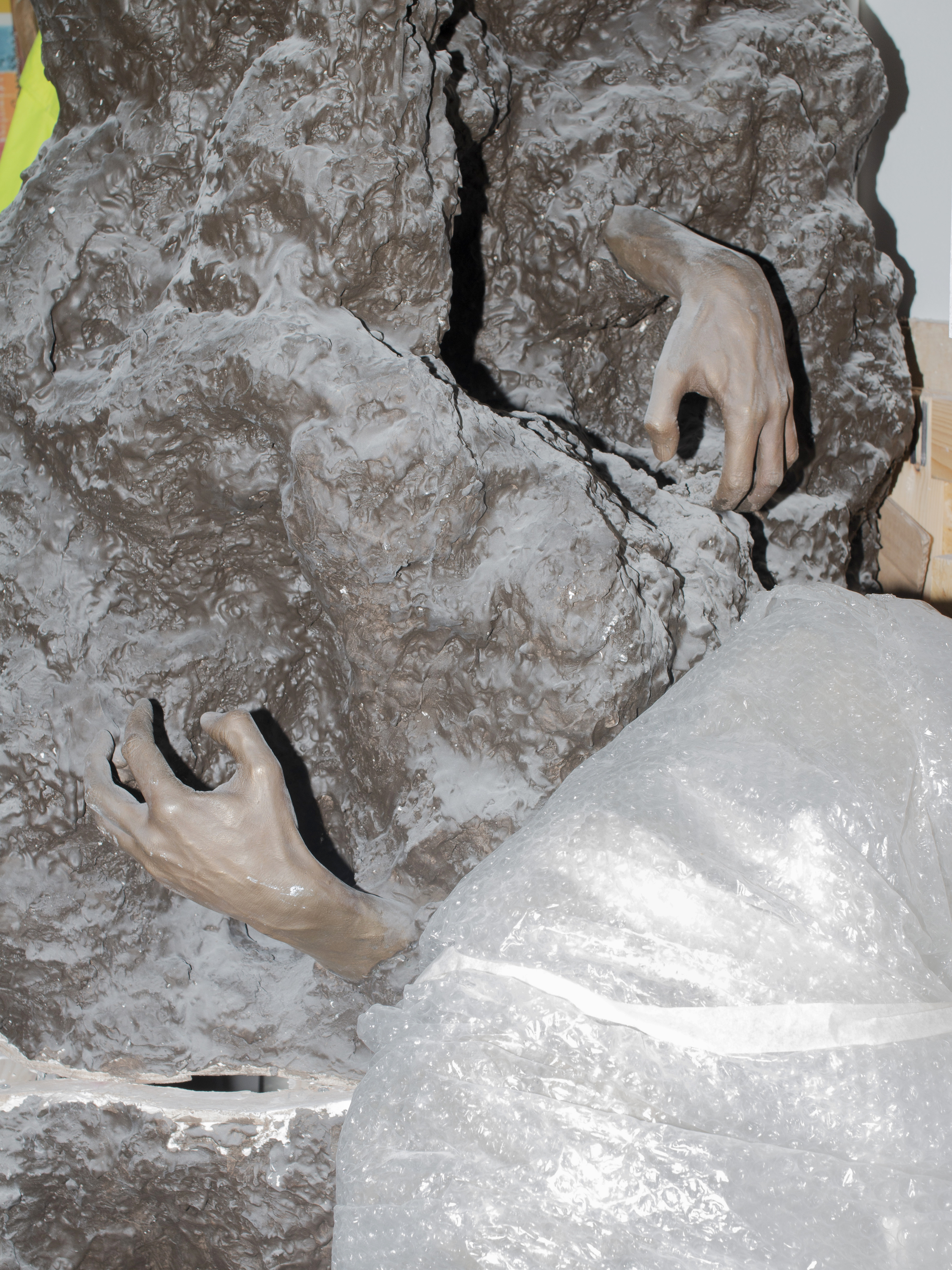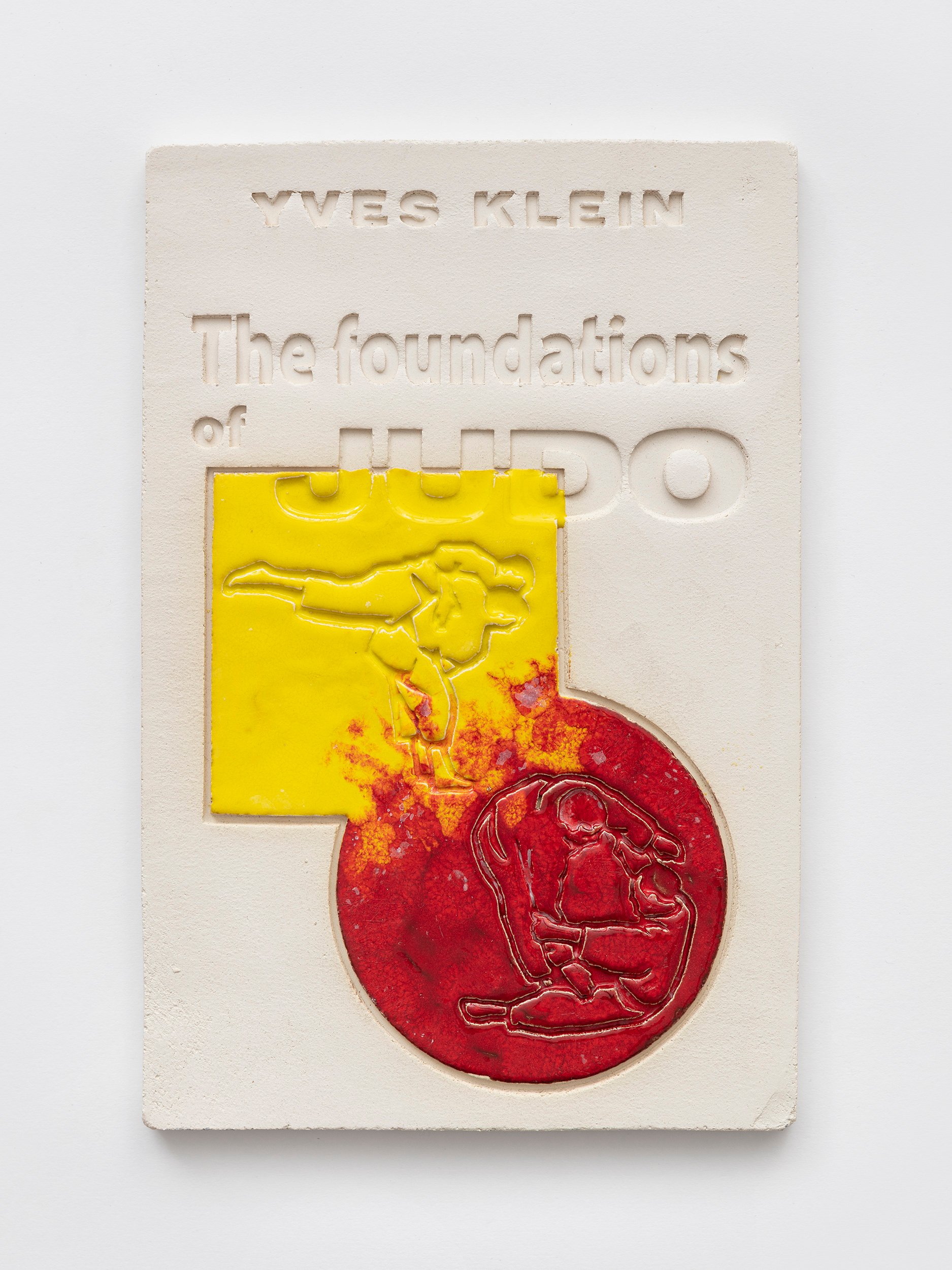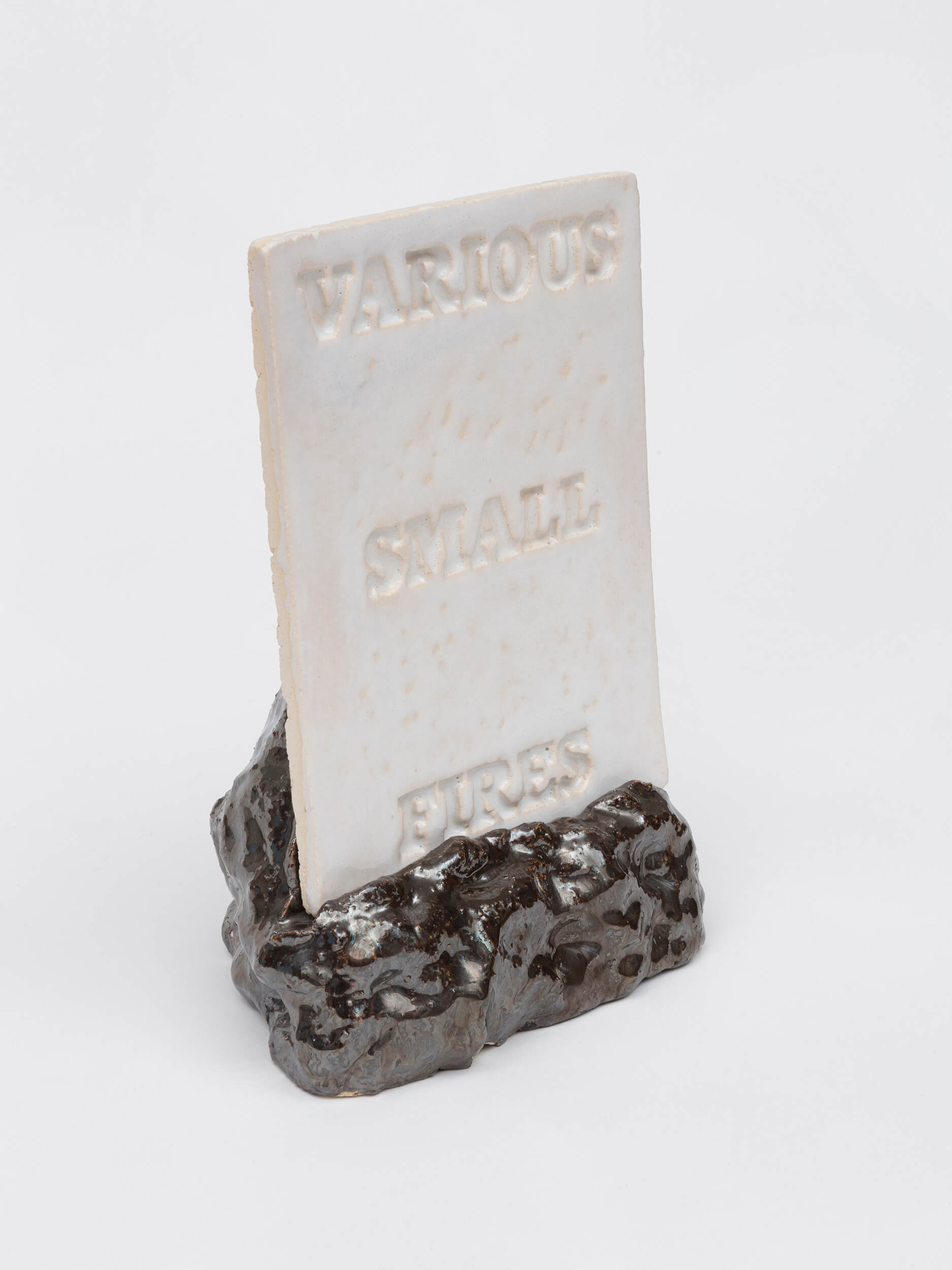William Cobbing
Can you describe your work in three words?
Haptic, empathetic, unearthly.
What got you into the arts? How did you become an artist?
I loved painting and drawing as a kid, and my mum had a small pottery as a hobby, so I used to make clay sculptures. My foundation year at St Martins in Clerkenwell, London, was a revelation, I felt so happy to be making art every day for the first time.
What drew you to sculpture?
When I made paintings, I tended to use the paint as a kind of visceral medium, building it up in gloopy layers (I was influenced by Guston and Auerbach). Moving into sculpture allowed me to push this sense of tactility further, and to consider space, mass and texture more fully.
Your practice encompasses sculpture as well as performance and video, with clay being a reoccurring material. What interests you about this medium?
Clay is a very seductive and pleasurable material to use, I enjoy manipulating and shaping it. In this sense, the videos are the most opposite way to explore the physical process of engaging with the material, of forming and re-forming, and playing with the material in a temporal way. More recently, I’ve worked on clay sculptures to be fired and glazed, but still keeping this sense of metamorphosis. Glazes have allowed me to explore colour as a kind of fluid material as opposed to just a surface layer.
What are the things that inspire you most when creating?
All sorts, there’s never a set pattern. I find that, when I’m thinking of ideas for new works, I’m more visually alert. This could be from something I see or feel out cycling, as much as from going to exhibitions. I often respond visually to text, and I’ll often be reading a book, and find there’s scope to coax out your own visual interpretation of it. Sometimes it’s a physical observation. I’ve been learning how to climb on a climbing wall, which is inspiring in terms of movement and ways the body links to its surroundings.
Can you tell us more about the idea behind your ‘Cover Version’ series of ceramic book covers?
The idea came when I saw a pre-publication cover image of Kenneth Goldsmith’s book Wasting Time on the Internet. I loved the juxtaposition of the cute kitten, with a computer buffering symbol, as if this poor creature is caught in a kind of virtual purgatory. I made a set of ceramic covers of this, and posted one to Kenneth in New York, who I know and did an event with in London. He posted me back a copy of the actual book with a lovely note on the inside cover. I then made a series of different covers, which have now been exhibited at Offprint book fair at TATE Modern, Miss Read in Berlin, and at Kunsthaus Hamburg.
Who are the artists that have inspired you most?
From my time in The Netherlands, Aernout Mik, Mark Manders and Marlene Dumas. I’ve also been inspired by Brancusi, Medardo Rosso, Franz West, Jan Švankmajer and Huma Bhabha.
What interested you about joining Canopy Collections?
It immediately felt like a great idea to select and curate artworks for the home. We all have artworks in our homes, even just a postcard on the fridge, or a framed print, but the approach of Canopy Collections was to really foreground this idea of making our home spaces much more liveable through well chosen and thoughtfully placed artworks. Knowing several of the artists already, I felt privileged to be in their company.
Do you collect art from other artists? How important is it for you to live with art?
It’s essential for me to have art around in my home, and to change it around so it stays fresh. I’ve often swapped works with artist friends, and bought works too. I also sometimes display works from my grandfather Bob Cobbing’s concrete poetry archive — Dom Sylvester Houédard is my favourite.
Any projects in the pipeline?
I’m currently working on a public commission, Written in Water, for the Peabody and Haworth Tompkins architects development on Fish Island where I have my studio. Next year I’ll also be in the exhibition Human Conditions of Clay curated by Deborah Smith at Chapter, Cardiff. I’ll be exhibiting work in the International Triennial of Art and Environment, EKO 8: A Letter To The Future, in Maribor, Slovenia, next May and I’ve been selected for a residency at EKWC European Ceramic Work Centre in The Netherlands, starting in the new year.
Click here to find out more about William Cobbing’s Fish Island Art Commission for 2021.
